With tools like ChatGPT and Midjourney, Generative AI has taken off, showing its strength in making amazing visual art and interesting, detailed text conversations.
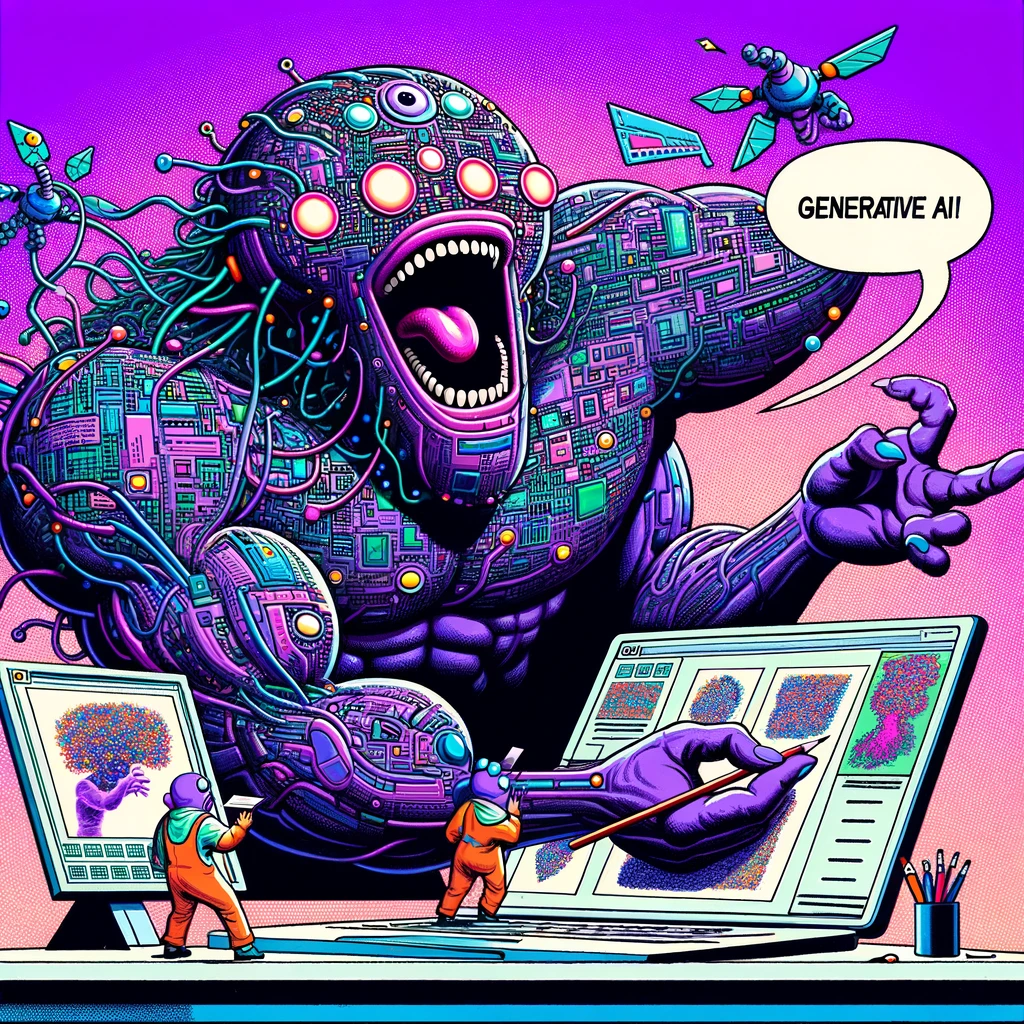
What powers Generative AI?
Generative AI is built on three components –
- Data: Data in Generative AI is like the life experiences and information our brains accumulate over time. Just as our experiences shape our understanding and responses, diverse datasets provide AI with a rich source of knowledge to learn patterns and relationships.
- Neural networks: A neural network is like a team of detectives solving a case. Each detective (neuron) has a piece of the puzzle (data). They share clues (inputs) and work together, combining their findings to form theories (process information). Over time, as they get more clues, they refine their theories until they solve the case (make a prediction or decision), getting better with each new case they work on.
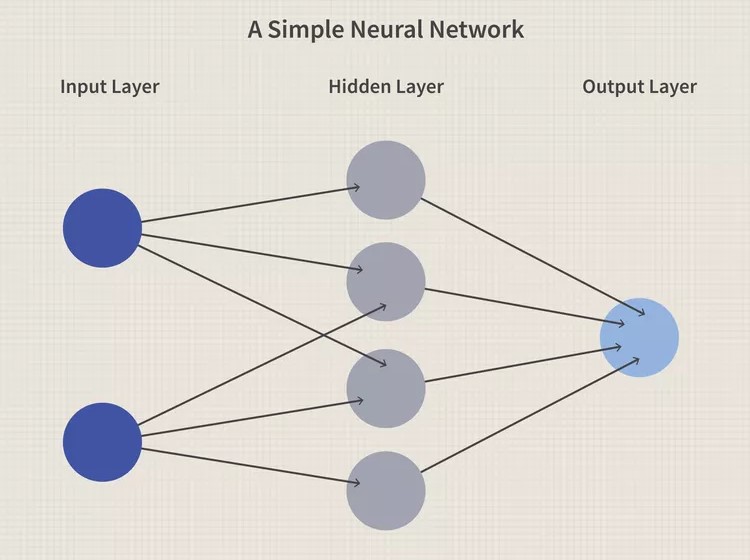
- Algorithms: An algorithm is like a set of directions for assembling a piece of furniture. Each step guides you through a specific action or decision, leading you to put together all the parts in the correct order. Just as following the directions step-by-step results in a fully assembled piece of furniture, following an algorithm’s steps leads to a completed task or solved problem.
How does AI Learn?
Here are a few learning techniques used in training AI
- Supervised learning: It is a learning method where algorithms learn from labelled training data. For example, consider a list of customer service requests, each automatically tagged with specific categories like ‘billing,’ ‘technical support,’ or ‘general inquiry. AI does this by studying 1000s of labels trained by humans.
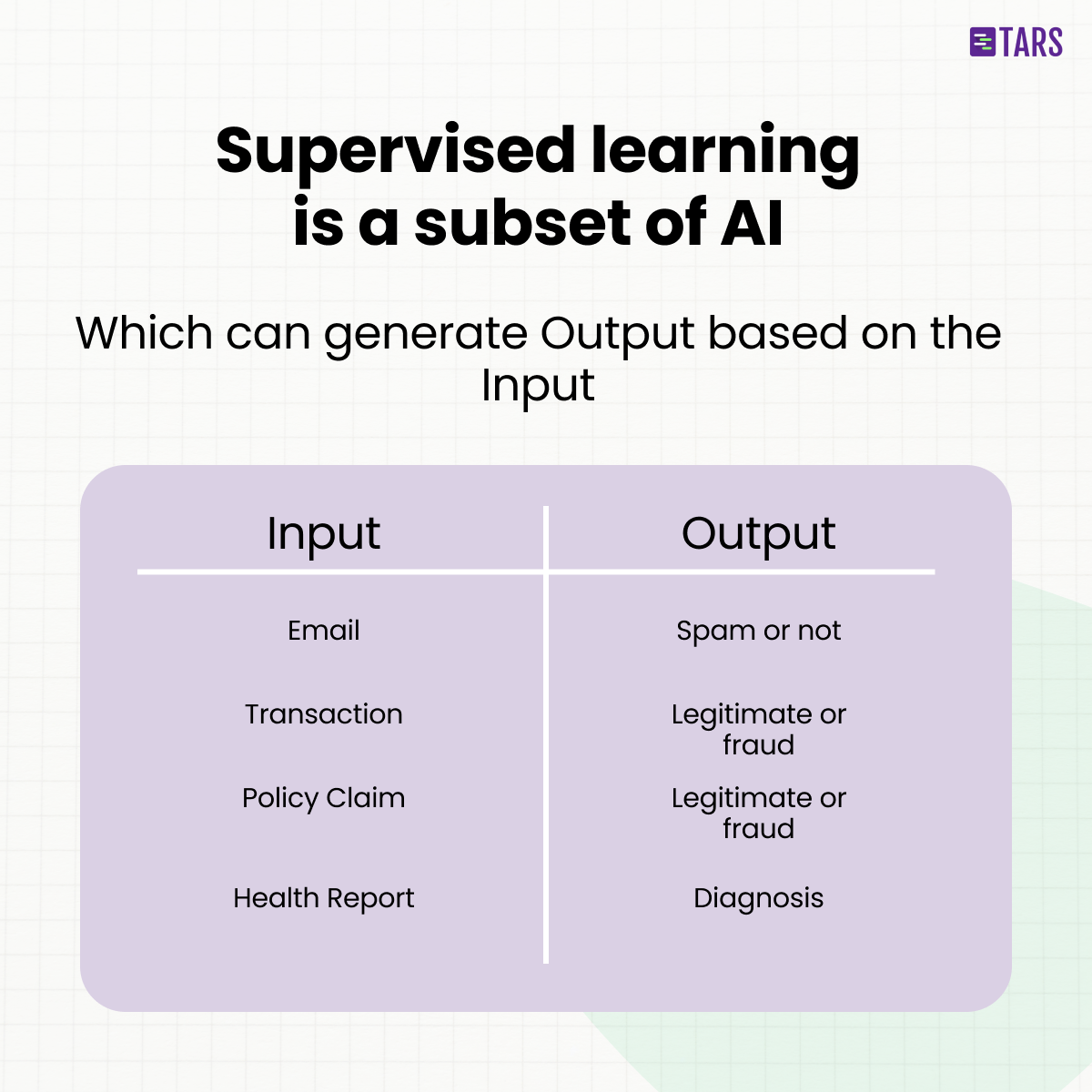
- Unsupervised learning: Here, AI learns from data without labels. It looks for patterns and groups similar things together, like iPhone groups photos with similar faces.
- Semi-supervised learning: A mix of labelled and unlabeled data is used. AI learns from both, improving accuracy with less labelled data.
- Reinforcement learning: AI learns by trial and error, receiving feedback like rewards or penalties. It’s like teaching pet tricks with treats for the right actions.
How does AI learn to generate text?
Here’s a step-by-step breakdown of text generation in Gen AI –
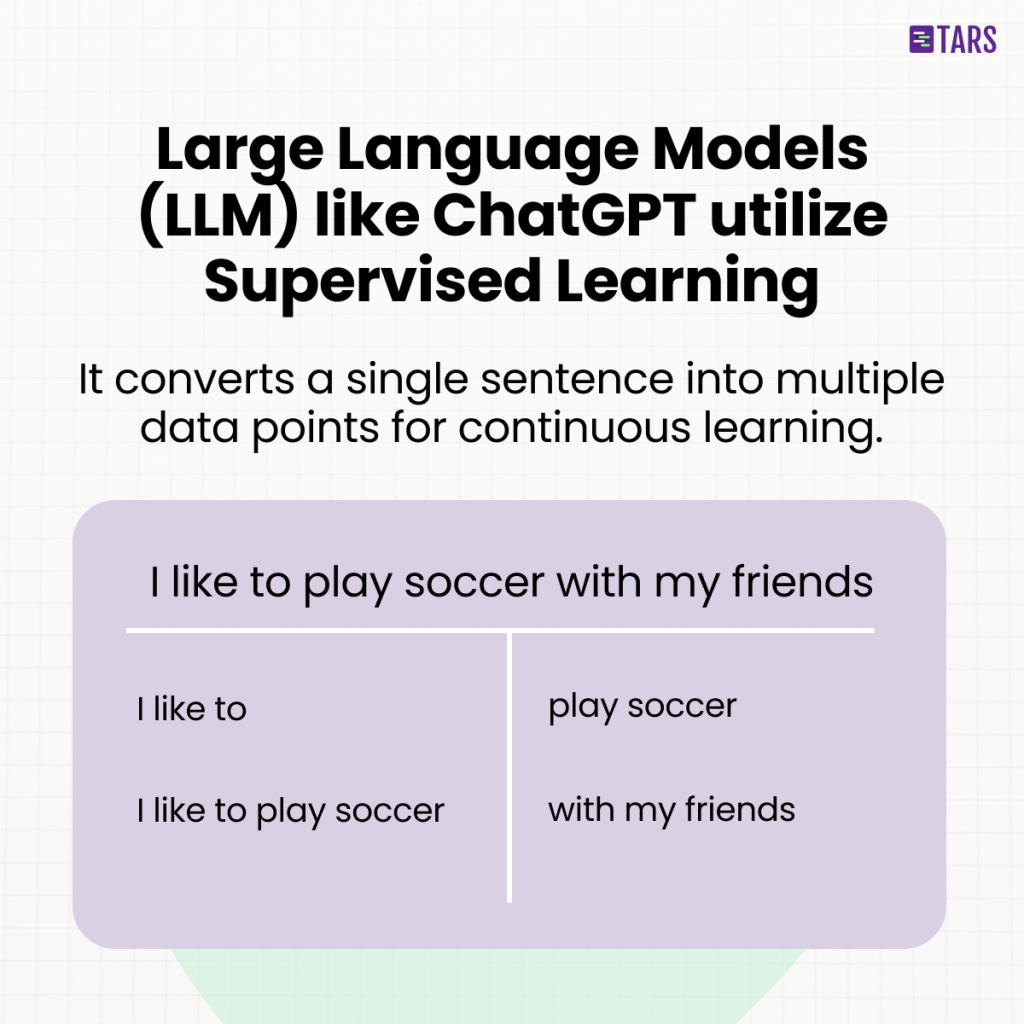
- First, the AI uses large amounts of text data to learn language patterns. This is usually done through supervised learning, where the AI is trained on datasets that are already labelled, helping it understand the context and structure of language.
- Then, neural networks, which act like a simplified version of the human brain, analyze this data. They interpret the nuances of language, setting a foundation for the AI to generate meaningful and contextually relevant text.
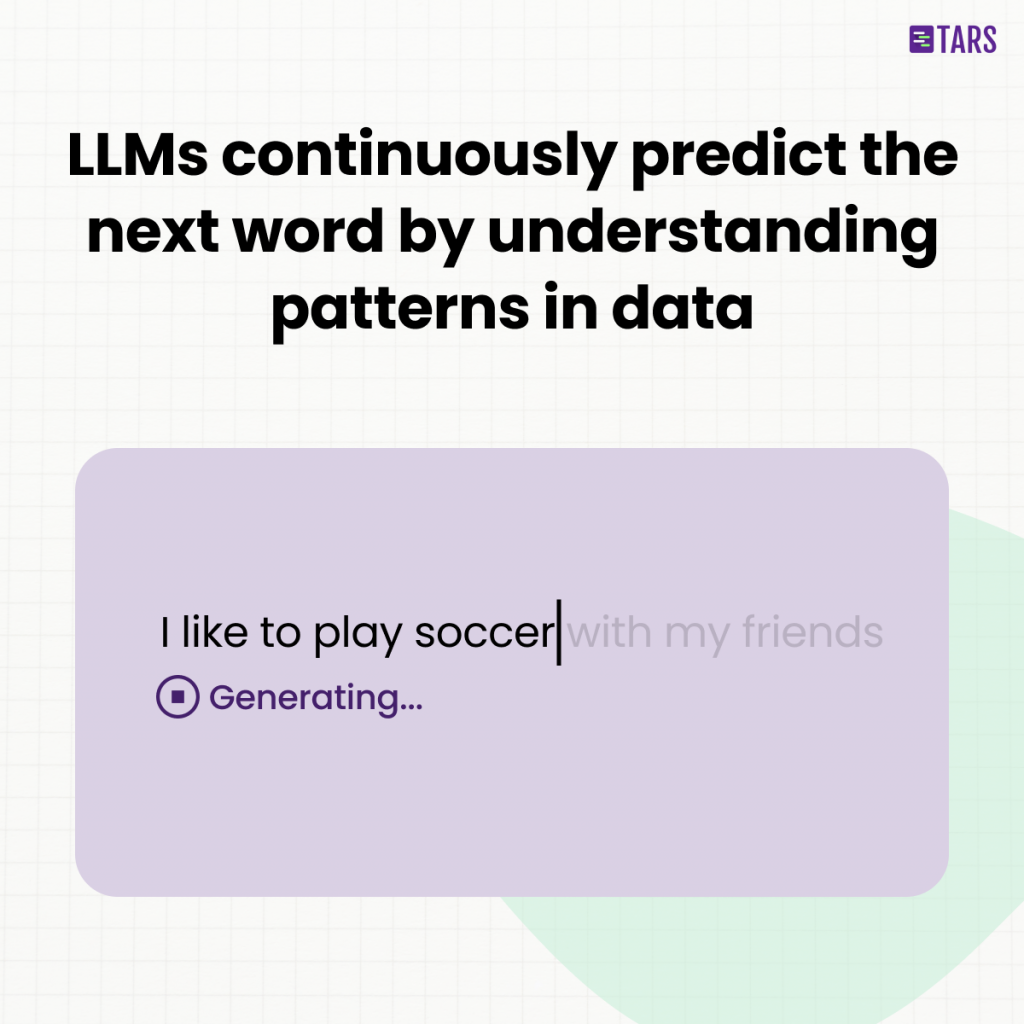
- After generating text, the AI receives human feedback on its output. This feedback, called RLHF (Reinforcement Learning from Human Feedback), helps the AI better understand human preferences and nuances.
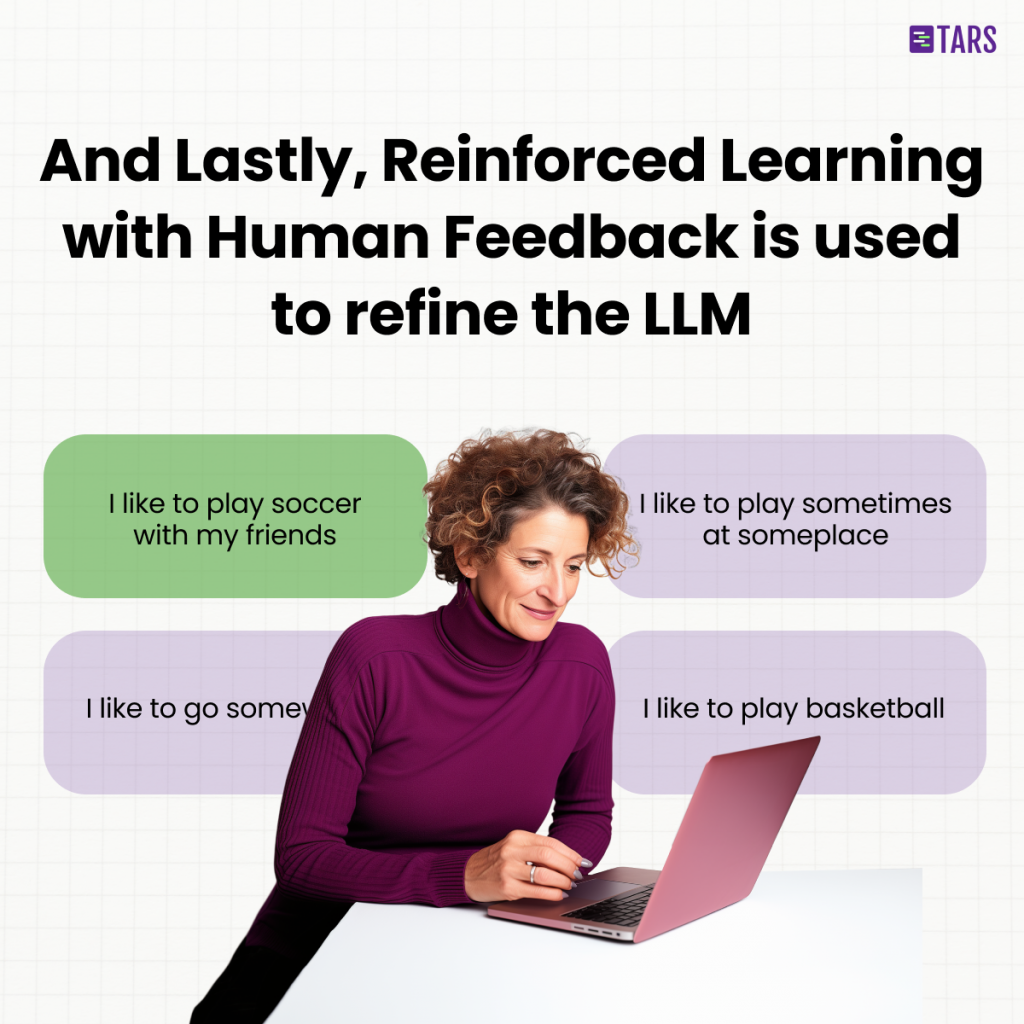
- The AI adapts and modifies text generation based on this feedback, leading to consistent quality outputs and content accuracy improvements.
Get started with Generative AI
Innovative leaders have started using Generative AI to automate common customer inquiries and requests to improve CX and free their agents from mundane work.
To use Generative AI effectively, you need your process aligned, like collecting relevant data, and your team needs to be skilled with specific AI expertise in prompt engineering, fine-tuning, etc. These are challenging to develop and can take months of effort.
We can help you kick start with our expertise in these areas and ensure your business stays relevant.
Book a free consulting session with us.

Vyshnav is a writer and editor who’s been creating written and multimedia marketing content for agencies and businesses since 2018. His work spans multiple industries, but has ultimately led him to focus on conversational AI as a core niche.
Vyshnav writes and manages different types of content for TARS, particularly in automation & customer experience domains for BFSI.
In his spare time, you can either find him busy with ancient scriptures or trekking across the western ghats.
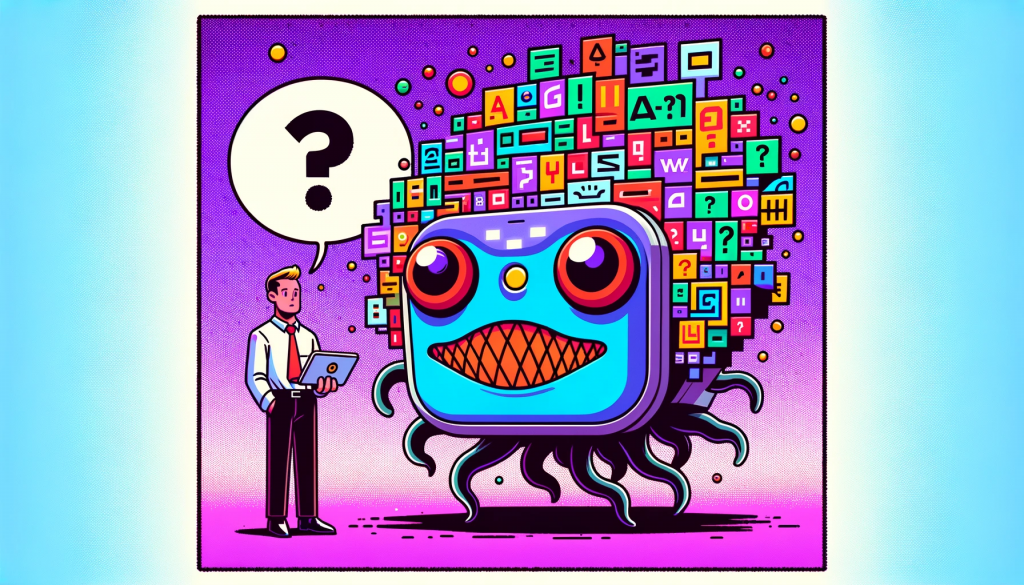
0 Comments on "How does Generative AI work?"